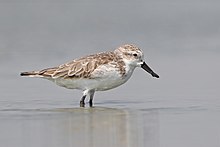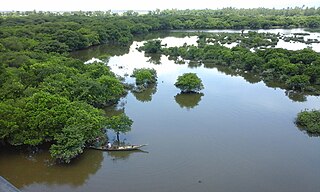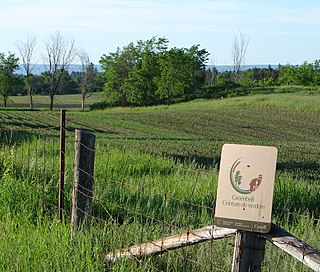
The Greenbelt is a 203.5-square-kilometre (78.6 sq mi) protected area of green space, including forests, farms, and wetlands, that encircles Canada's capital city of Ottawa, in the province of Ontario. It begins at Shirleys Bay in the west and extends to Green's Creek in the east. 149.5 square kilometres (57.7 sq mi) of the greenbelt is owned and managed by the National Capital Commission (NCC) and the rest is held by other federal government departments and private interests. Real estate development within the greenbelt is strictly controlled.
Kuwŏlsan, or Mount Kuwol, is a mountain in South Hwanghae, North Korea. The mountain takes its name from the ninth month of the lunar calendar, because it is considered particularly attractive in that month. The mountain is a major summer resort in North Korea, attracting many domestic tourists.
The Ch'ŏngch'ŏn is a river of North Korea having its source in the Rangrim Mountains of Chagang Province and emptying into the Yellow Sea at Sinanju. The river flows past Myohyang-san and through the city of Anju, South P'yŏngan Province. Its total length is 217 km (135 mi), and it drains a basin of 9,553 km2.
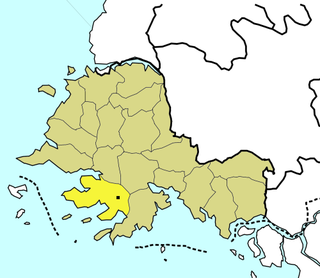
Ongjin County is a county in southern South Hwanghae Province, North Korea. It is located on the Ongjin Peninsula, which projects into the Yellow Sea.
The Ogasan Nature Reserve is a national park located in North Korea. It is situated around Mount Oga, which straddles the borders of Hwap'yŏng county in Chagang Province and Kimhyŏngjik county in Ryanggang.

Yashilkul is a freshwater lake in Gorno-Badakhshan Autonomous Province, in southeast Tajikistan, about 130 kilometres (81 mi) east of the provincial capital of Khorugh. Lying in the upper Gunt valley of the Pamir Mountains, it has an area of 3,600 hectares with a maximum depth of 52 metres (171 ft). It lies 1.5 kilometres (0.93 mi) from a similar lake, Bulunkul, both of which are surrounded by other wetlands as well as sand and pebble plains. The lake forms part of the Bulunkul and Yashilkul lakes and mountains Important Bird Area.
Turumtaykul, also spelled Turumtaikul, is a freshwater mountain valley lake in Gorno-Badakhshan Autonomous Region, in the south-east Tajikistan, about 110 kilometres (68 mi) east of the provincial capital of Khorugh. Lying in the Pamir Mountains at 4,202 m (13,786 ft) above sea level, it is 7 by 2 km, and has an area of 900 ha with a maximum depth of 18 m (59 ft). Its most numerous fish are Sattar snowtrout and False osman. The lake forms part of the Djavshangoz Important Bird Area.

Unmu-do is an 80 ha island in the north-eastern Yellow Sea lying about 19 km off the western coast of North Korea. The site has been identified by BirdLife International as an Important Bird Area (IBA) because it supports endangered black-faced spoonbills.

The Oksem, Dongsolbatsem, Sesolbatsem and Namsolbatsem Islands Important Bird Area comprises a group of small islands, with a collective area of about 50 ha, in the north-eastern Yellow Sea, lying close to the western coast of North Korea. The site has been identified by BirdLife International as an Important Bird Area (IBA) because it supports breeding endangered black-faced spoonbills.
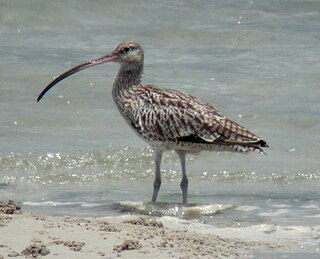
The Sogam-do, Daegam-do, Zung-do, Ae-do and Hyengzedo Islands Important Bird Area comprises a group of small islands, with a collective area of 18 ha, in the north-eastern Yellow Sea, lying close to the western coast of North Korea. The site has been identified by BirdLife International as an Important Bird Area (IBA) because it supports breeding endangered black-faced spoonbills as well as vulnerable Chinese egrets and up to 850 Far Eastern curlews as passage migrants. The site has been designated one of North Korea’s Natural Monuments.

The Daedong Bay Important Bird Area lies on the north-eastern coast of the Yellow Sea on the west coast of North Korea near the mouth of the Taedong River. It comprises 3,500 ha of marine, intertidal and beach wetlands, encompassing a 2,000 ha protected area. It has been identified by BirdLife International as an Important Bird Area (IBA) because it supports significant populations of various birds, including greater white-fronted geese, Oriental storks, black-faced spoonbills, Chinese egrets, great bustards, hooded cranes, red-crowned cranes, Far Eastern curlews, Nordmann's greenshanks and spoon-billed sandpipers. Threats to the site include agricultural intensification and aquacultural development.

The Ongjin Bay Important Bird Area lies on the western coast of North Korea on the Yellow Sea, in Ongjin County, South Hwanghae. It comprises 3500 ha of wetlands, including rice paddies, and encompasses a 1000 ha protected area. It has been identified by BirdLife International as an Important Bird Area (IBA) because it supports significant populations of various birds, including swan geese, bean geese, greater white-fronted geese, Oriental storks, black-faced spoonbills, white-naped cranes, red-crowned cranes, long-billed plovers and Far Eastern curlews. It is threatened by aquacultural development.

Ŭllyul Kŭmsanp'o is an 800 ha wetland wildlife reserve on the north-eastern shore of the Yellow Sea, on the west coast of North Korea in Ŭllyul County, South Hwanghae Province south of the estuary of the Taedong River. The site forms the core of a 1400 ha Important Bird Area (IBA), identified as such by BirdLife International because, with adjacent rice paddies, it supports populations of migrating and wintering water and wetland birds. Species using the site include swan geese, whooper swans, black-faced spoonbills, Chinese egrets, red-crowned cranes and Nordmann's greenshanks. The IBA is threatened by agricultural intensification.
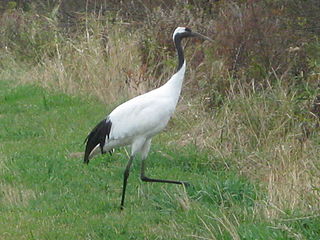
Anbyon Field is a 1000 ha wetland site in Kangwon Province of North Korea. It is one of the state’s designated Natural Monuments and has been identified by BirdLife International as an Important Bird Area (IBA) because it supports a population of endangered red-crowned cranes.

Chongdan Field is a 1,000 ha wetland protected area in South Hwanghae Province of North Korea. It and its surrounds, including rice paddies, have been identified by BirdLife International as a 2500 ha Important Bird Area (IBA) because it supports populations of swan geese, whooper swans, black-faced spoonbills, red-crowned cranes, long-billed plovers, Far Eastern curlews and Nordmann's greenshanks.

Onchon Field is a 50,000 ha wetland site in South Pyongan Province of North Korea. It contains freshwater wetlands, rice paddies and salt pans. It has been identified by BirdLife International as an Important Bird Area (IBA) because it supports populations of swan geese, greater white-fronted geese, whooper swans, black-faced spoonbills, Chinese egrets, great bustards, white-naped cranes, hooded cranes and red-crowned cranes. It is threatened by agricultural intensification, aquacultural development and human disturbance.

Panmun Field is an 8000 ha wetland site in southern North Hwanghae Province of North Korea, close to the city of Kaesong and the border with South Korea. It contains mainly rice paddies. It has been identified by BirdLife International as an Important Bird Area (IBA) because it supports populations of swan geese, greater white-fronted geese, white-naped cranes, hooded cranes and red-crowned cranes. It is threatened by human disturbance.

The Taedong River estuary Important Bird Area is an 11,500 ha site in southern South Pyongan Province of North Korea, where the Taedong River meets the Yellow Sea. It has been identified by BirdLife International as an Important Bird Area (IBA) because it supports populations of various waterbirds. These include swan geese, mute swans, whooper swans, Baikal teals, Steller's sea-eagles, red-crowned cranes and Saunders's gulls. The site comprises a range of wetlands including freshwater lakes, salt pans and rice paddies. Threats to the IBA include agricultural intensification and aquacultural development.

The Baie de Bouéni is a large bay in the south-west of the French island territory of Mayotte, in the Comoro Islands lying at the northern end of the Mozambique Channel between the East African country of Mozambique and Madagascar. It is about 5 km wide at its mouth, and 10 km in length.

The Maubara Important Bird Area is a 5292 ha tract of land in East Timor, a country occupying the eastern end of the island of Timor in the Lesser Sunda Islands of Wallacea.
